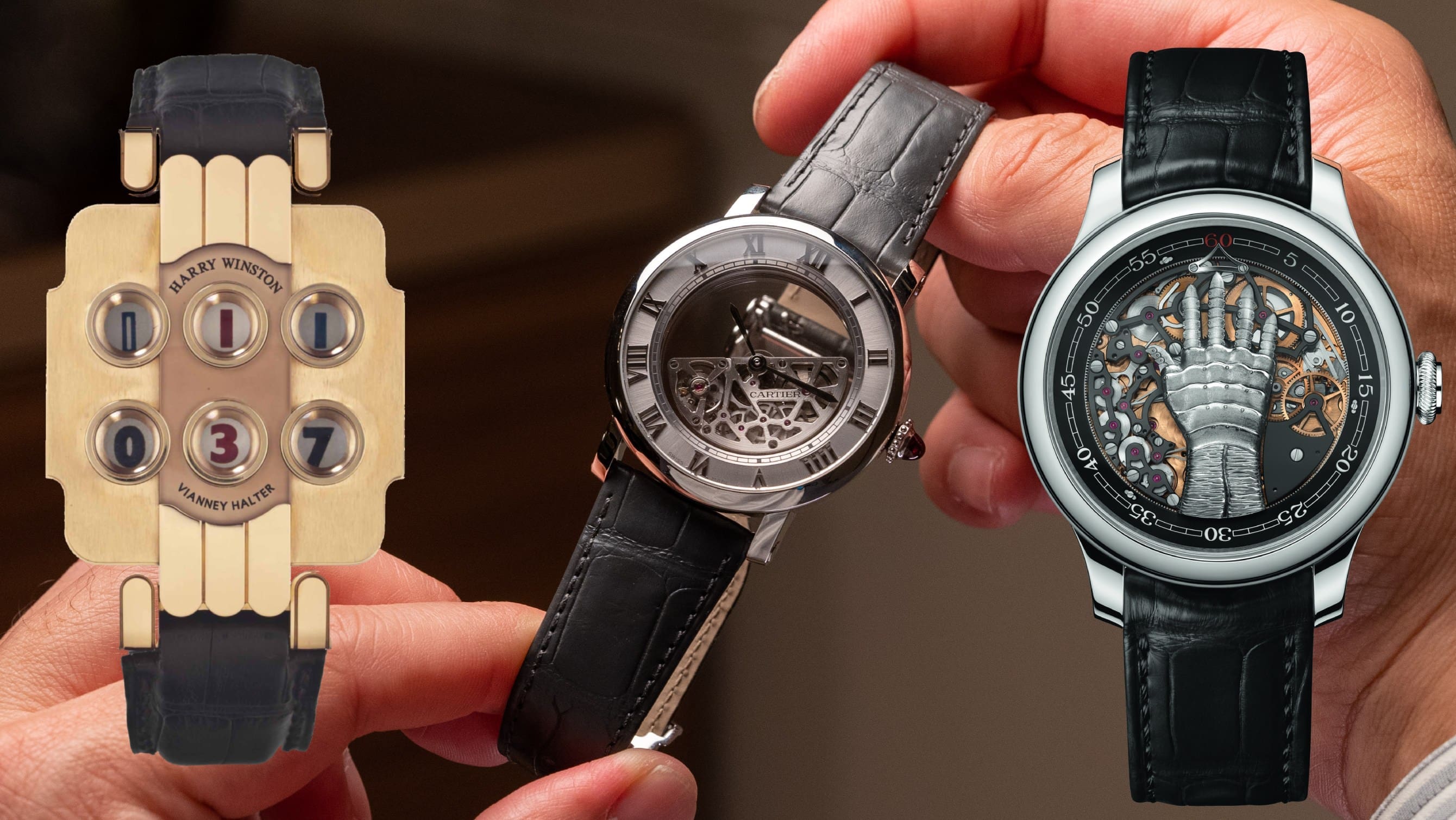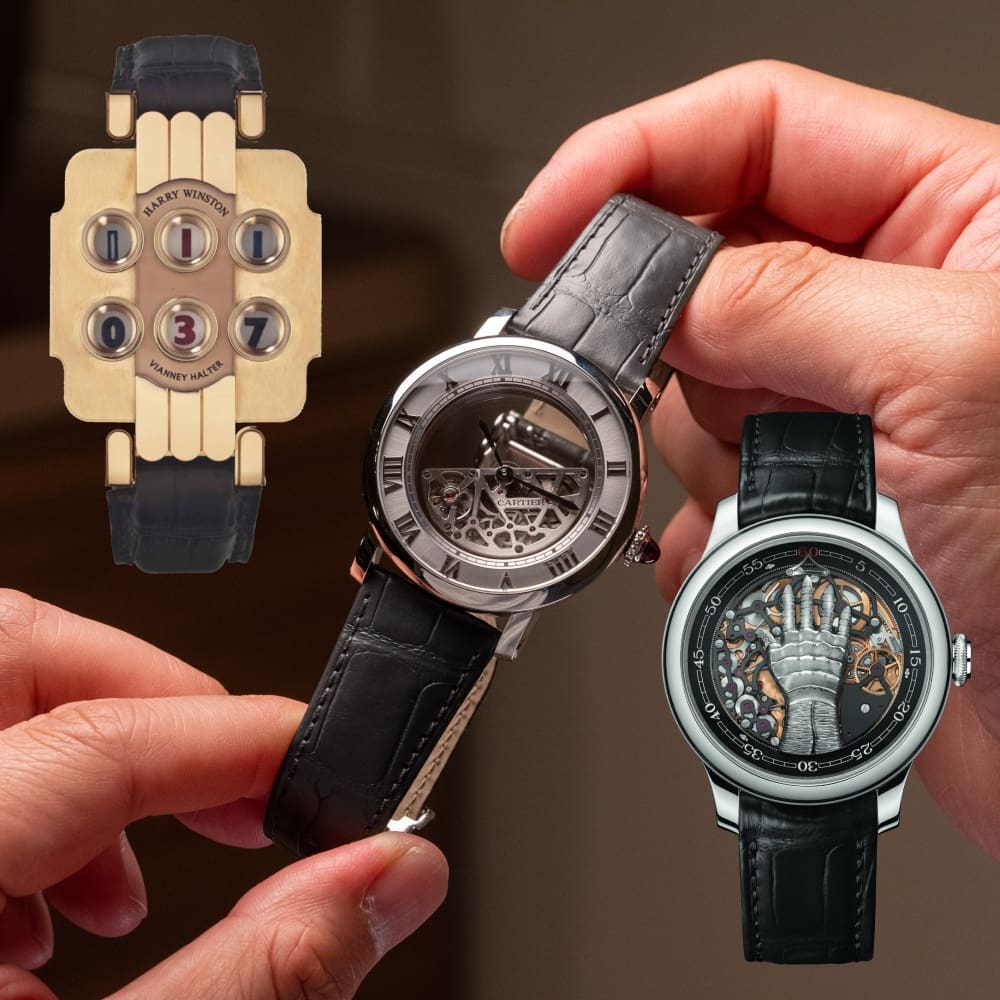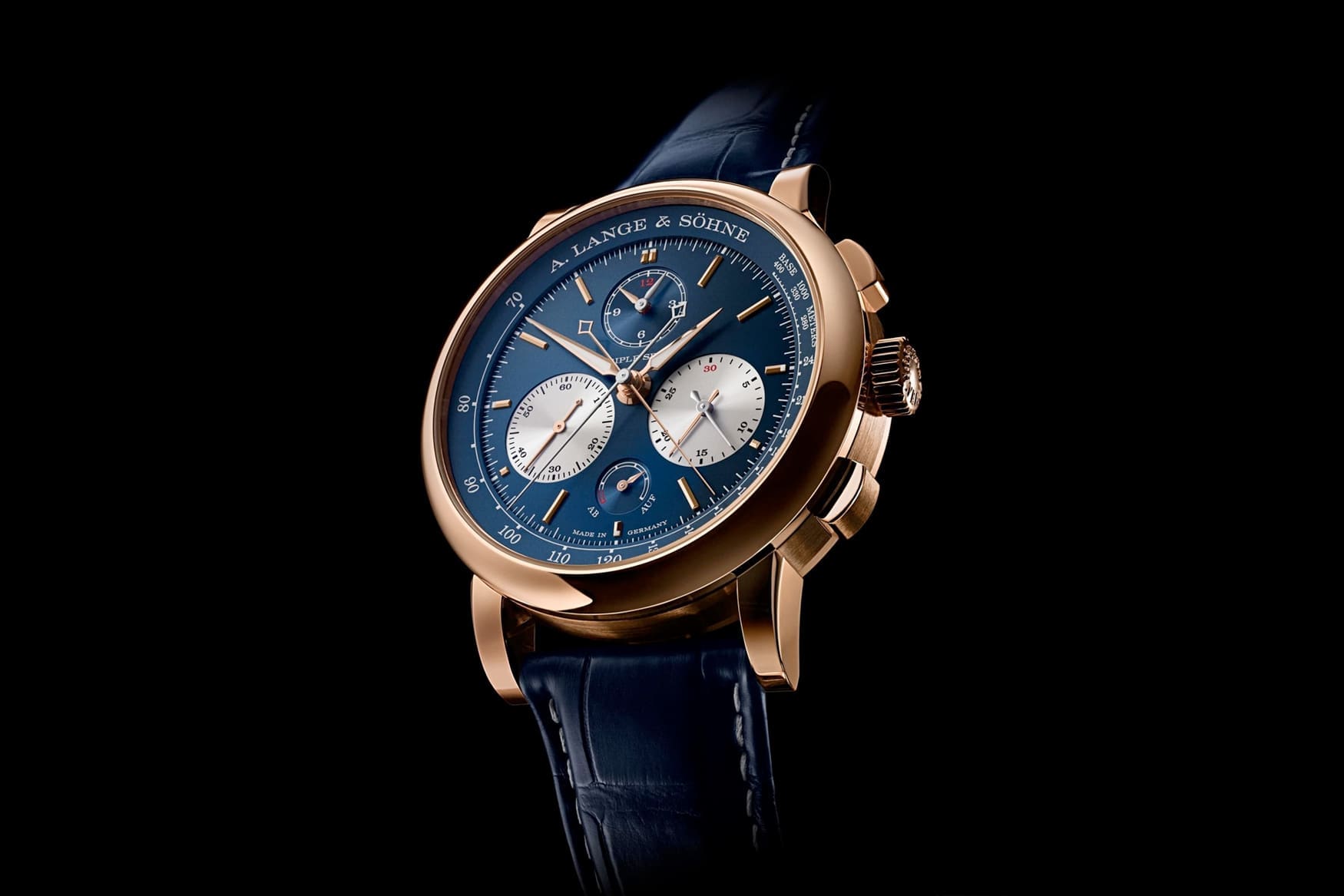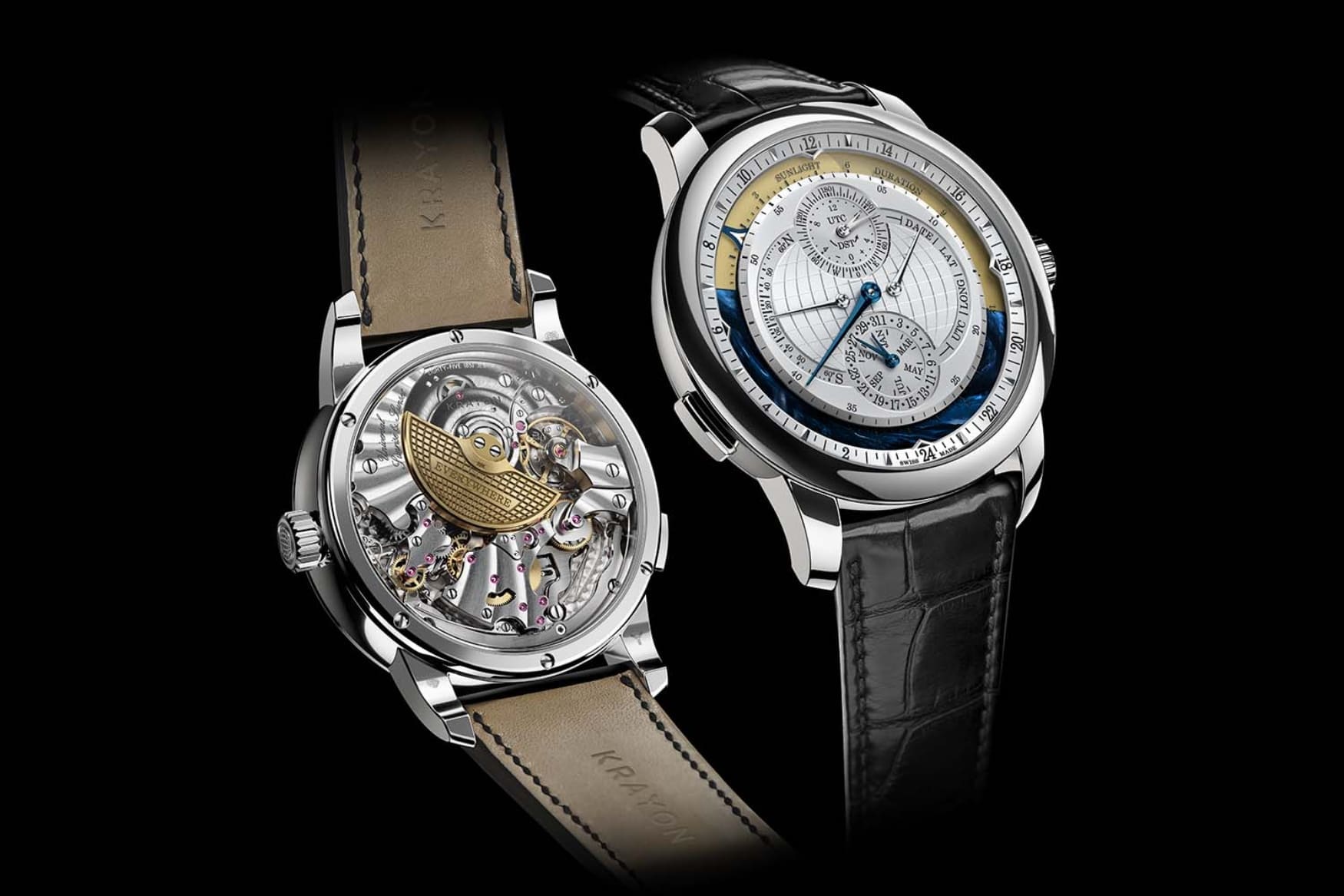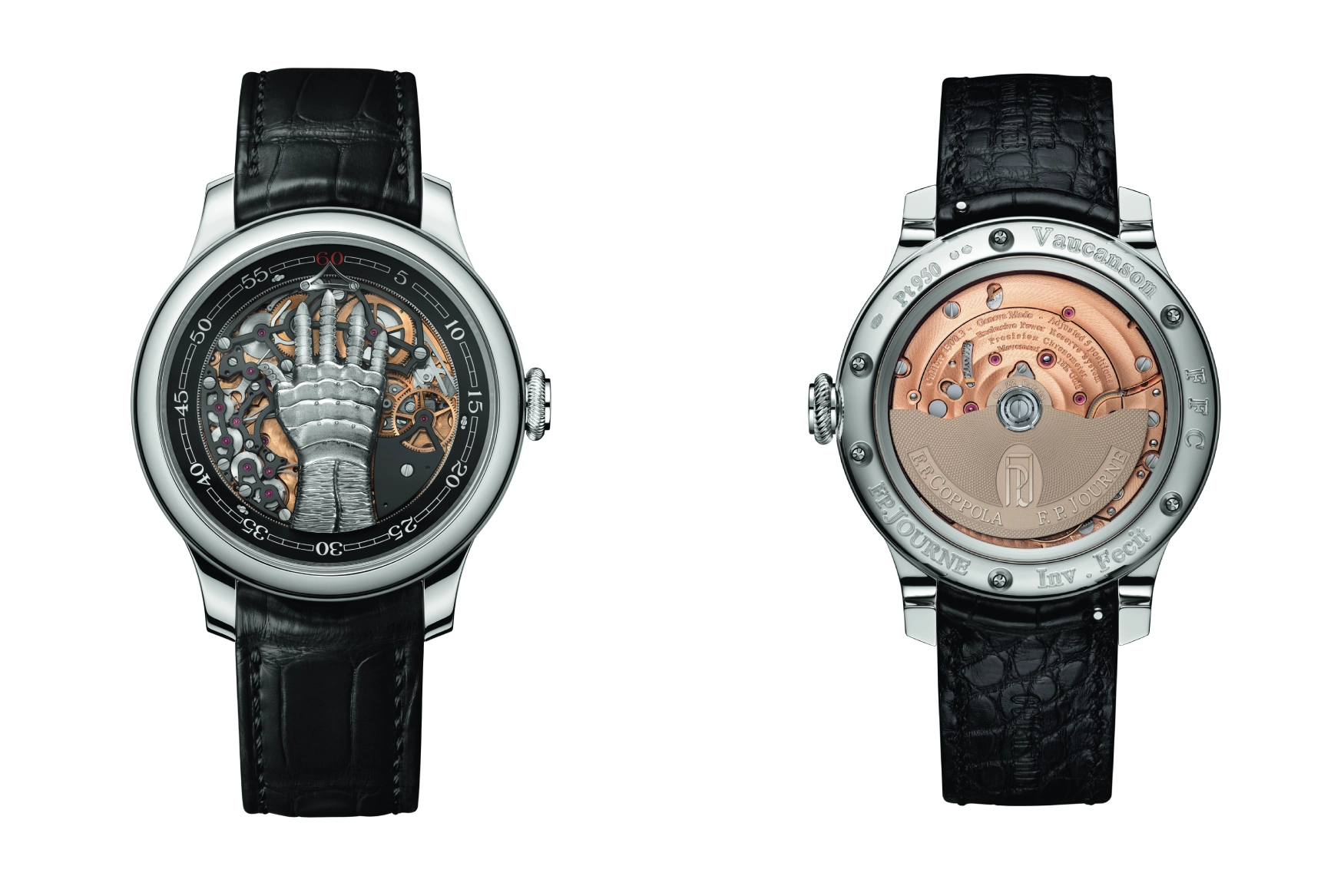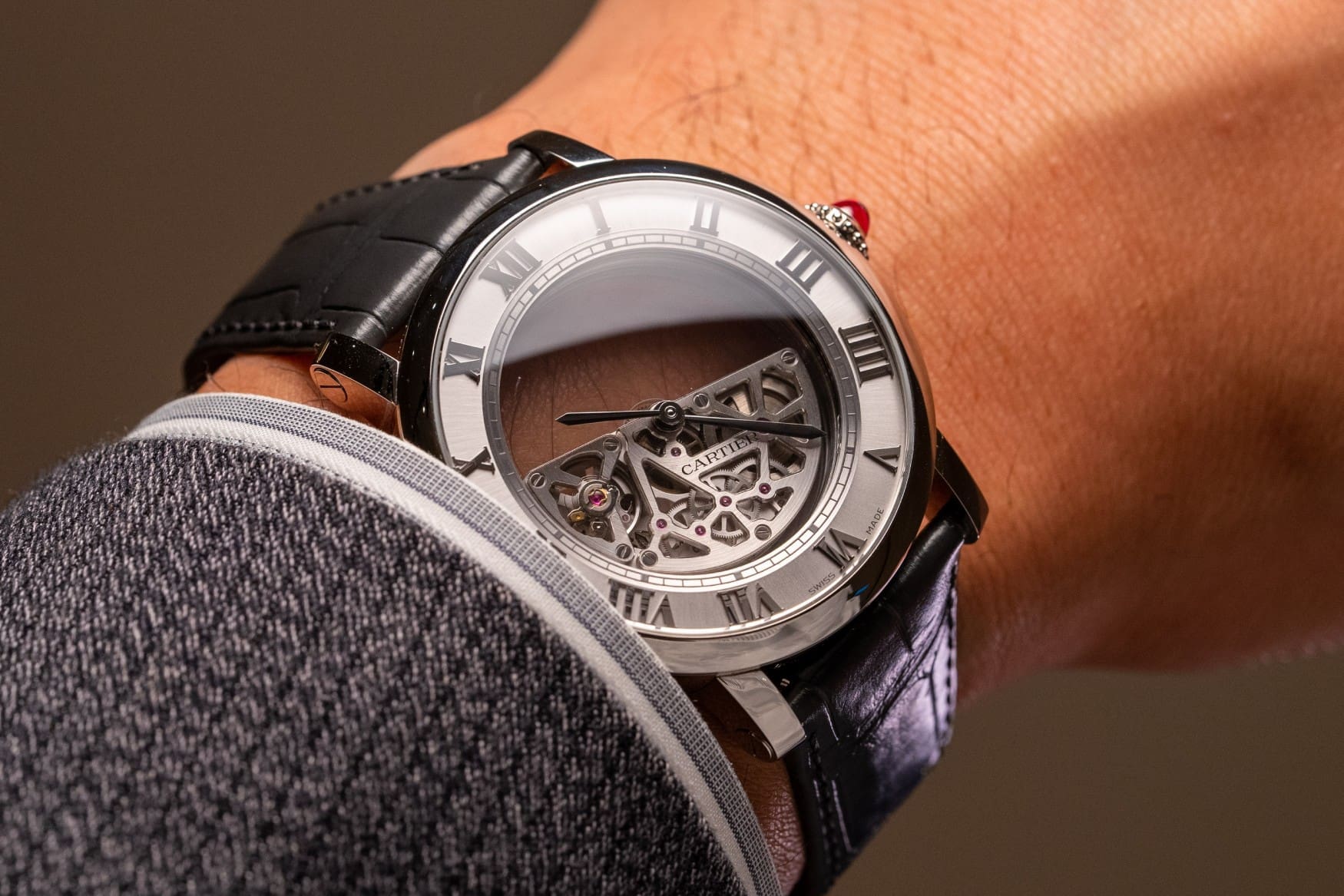From death prediction to sunrise times, these are the most unique watch complications
Borna BošnjakThe race for the most complicated watch in existence is a historic and complex one, only subjective by virtue of what a brand may constitute as a complication. Focusing purely on the number of functions, though impressive, leaves out some of the more unique takes on a watchmaker’s mechanical mastery. A list of the most unique complications is admittedly a subjective one, and is bound to leave some pieces out that others may deem worthy inclusions – honourable mentions going to the miniature bellow-equipped Jaquet Droz Charming Bird automaton and the many iterations of Luca Soprana’s Astronomia. But with watches sporting rotor-contained movements (yes, I’m serious) – only a select few got the nod – and not a single watch on this list features a tourbillon.
A. Lange & Söhne Triple Split
Let’s start with the Lange Triple Split, as it’s a great example of the point I made in the introduction. It’s nowhere close to outnumbering the German watchmaker’s 1815 Grand Complication, but simply the fact that it’s the world’s first and only chronograph with a trifecta of rattrapante functions guarantees it a place on this list. To be fair to A. Lange & Söhne, this is just about the simplest name for a watch with this complication, though it could be a little confusing. Rather than referring to the central chrono hand splitting into three (instead of two on a regular rattrapante chronograph), the Triple Split employs rattrapante functionality on the 30-minute and 12-hour counters, too. Taking five years of development to go from the Double Split to the Triple, this “Ultimate Chronograph” was realised after the brand completed the aforementioned Grand Complication. The L.132.1 is manually wound and just as wonderfully executed as you may expect from a Lange chronograph, numbering 556 components, taking up to three weeks of assembly and disassembly to ensure it’s dialled in as well as it should be.
Harry Winston Opus 3
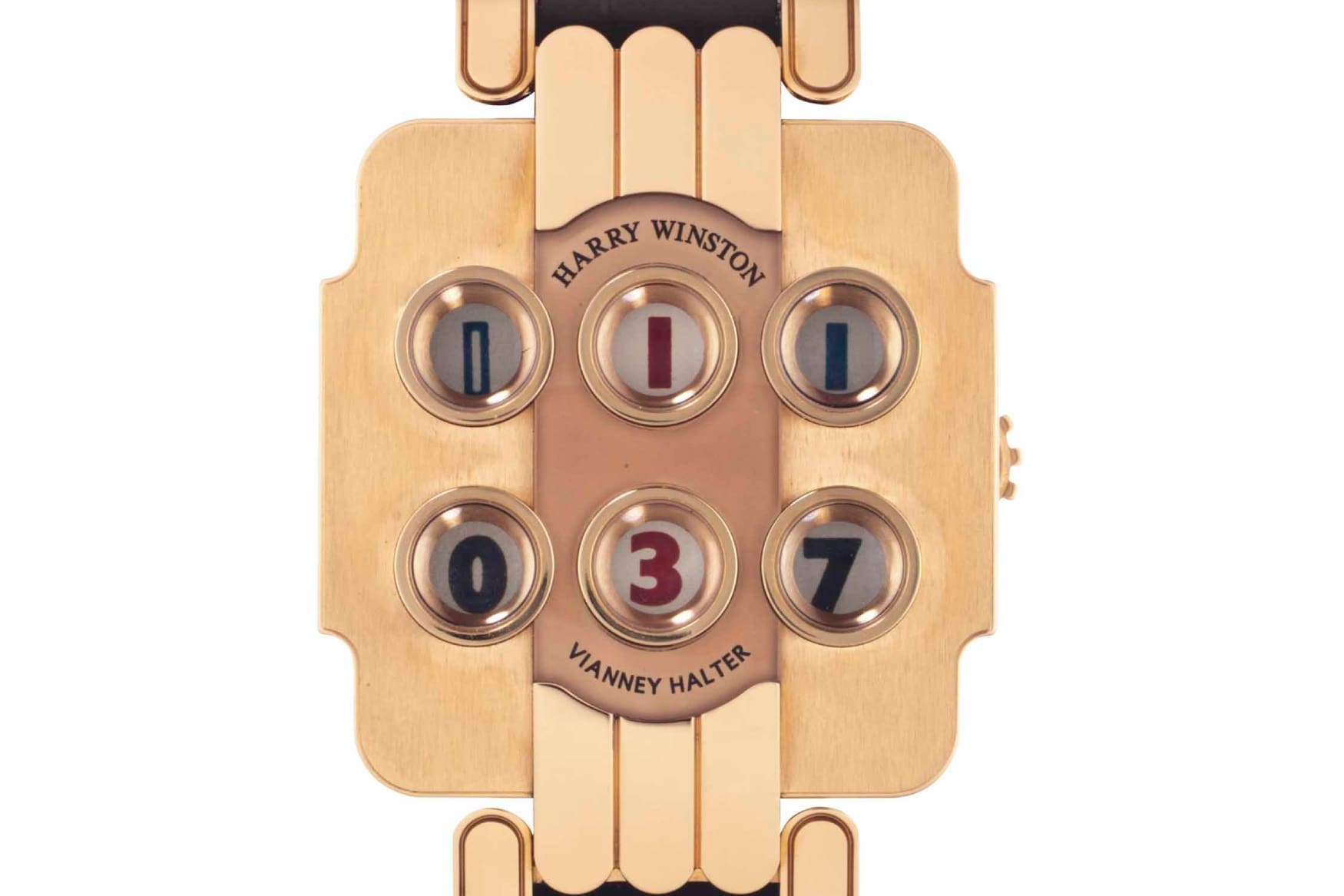
Watches like the Opus 3 are what inspired me to put this list together. At first glance, it’s an unassuming – and dare I say a wonky-looking little thing. Created as part of Harry Winston’s famed Opus series in 2003, the dial (?) of the Opus 3 alludes to the collaborating watchmaker whose style immediately shines through. Best-known for his Antiqua, Vianney Halter sought to implement a jumping seconds indicator to go along with the digital time display. As brilliant as the idea may have been, the execution proved significantly more challenging. The time on the watch above is currently 11:07, on the 13th of the month (date indicated in red). To make the most of its power reserve, the final four seconds of each minute would appear in the top left aperture, counting from 56 to 59, before jumping over to the next minute and stowing away. The movement would fall into the hands of Renaud & Papi, as Vianney Halter was no longer involved with the project, undergoing significant changes and taking a decade to complete its production run. Though its reputation for lacklustre reliability remains, it took F.P. Journe another three years to develop the Vagabondage III – the first-ever watch with a continuously running digital seconds.
Krayon Everywhere
Do you ever find yourself yearning for a watch that can calculate the sunrise and sunset times anywhere on the globe? Yeah, me neither. But Krayon went ahead and made one anyway! I jest, but this 595-component, micro-rotor-equipped mechanical calculator is nothing short of amazing. You might be more familiar with Krayon’s simpler Anywhere, a watch that only displays this time in one location, needing a trip to a watchmaker should you wish to change it. The Krayon USS powering the Everywhere is adjusted only by the crown and single pusher at 8 o’clock, and calculates the equation of time to keep track of the date, the latitude and longitude and Coordinated Universal Time. Input these parameters correctly, and the overlapping discs on the dial will indicate the duration of the night and day.
F.P. Journe FFC
From a complication that’s potentially useful to one that’s just a complete flex – and there are few more fitting of that introduction than the F.P. Journe FFC. First offered at Only Watch 2021 (and selling for a ridiculous CHF 4.5 million), the FFC’s name is a nod to the person that inspired it. After receiving a Chronomètre à Résonance as a birthday gift, a budding film director by the name of Francis Ford Coppola met with François-Paul Journe, discussing, among other things, a mechanical watch that displayed the time using finger-counting. Nearly a decade later, the prototype was sold at Only Watch, before the “production” version became available last year. The finger combinations are paired with the pointer floating around the outside of the dial, but their motion is actually based on Ambroise Paré’s hand prosthetic conceived in the 16th century, though rendered in miniature, hand-finish titanium. The base calibre is the Octa 1300, with an added set of cams occupying the left side of the dial operating the motion of the fingers, powered by a remontoir d’égalité that is wound each hour.
Cartier Masse Mystérieuse
Remember how I said that there are only a few watches that can “outflex” FPJ’s mechanical glove display? Well – this is one of them. The almost paradoxical existence of the Masse Mystérieuse still gets me, nearly two years on from its release. As you can see – the entire movement is contained within the rotor that freely spins around the central pinion, winding the mainspring at the same time. This brief return to Cartier’s ultra-high-end watchmaking is thanks to Carole Forestier-Kasapi, who employed six sapphire disks to make this vision come to life. Each hand is placed on one which is then connected to the crown via another, geared sapphire disk connected to the keyless works but hidden beneath the hour ring. The rotor is also privy to a sapphire disk, but thanks to the differential connecting the hands to the wheel train, they can stay in place while the movement spins freely. This means you can use the crown to set the time, but not actually wind the movement – in what I’m guessing is the one and only similarity between the Masse Mystérieuse and Seiko SKX.
Ludovic Ballouard Upside Down
If you’ve not heard of Ludovic Ballouard previously, you definitely know some of the watches he helped create – including, but not limited to the Franck Muller Crazy Hours, Harry Winston Opus 13, and F.P. Journe Sonnerie Souveraine. Most really complicated watches also look complicated – but the Upside Down is quite the opposite. The front reveals a single hand travelling around the dial, with Arabic numerals around its perimeter. Pretty simple, then – this is one of those 24-hour, one-handed watches – right? A closer look reveals the reason for this watch’s name. Each numeral is set on a rotating disc, spinning the right way round and indicating the correct hour with a coloured dot – in the image above, it’s 4:44. The magic is hidden around the back, the B01 movement using a special minute wheel to store the necessary energy to flip the discs at the top of the hour.
DRT Tempus Fugit
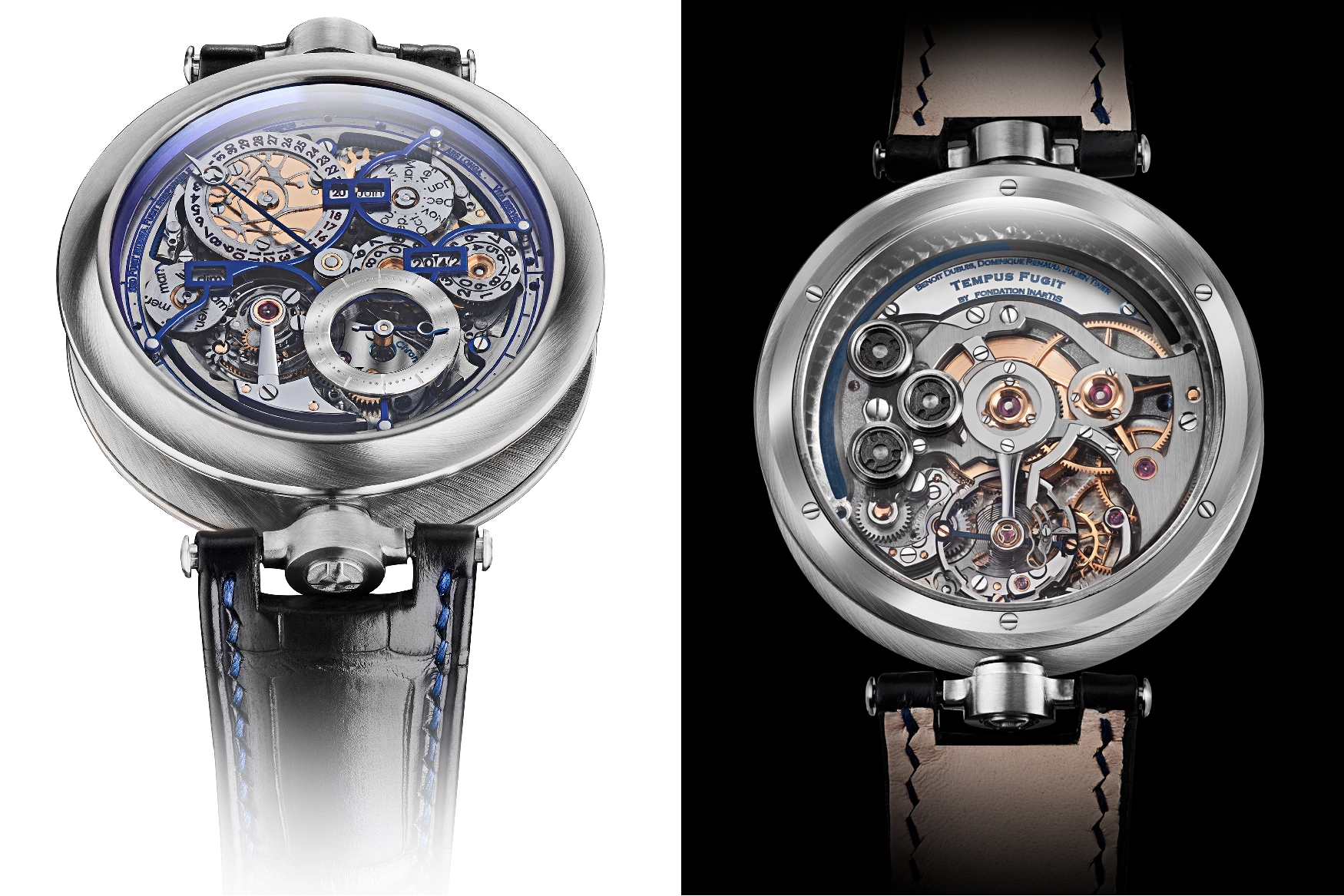
The last piece on this list is also my favourite, both for its execution of the usually super-complex secular calendar complication and its unusual application. For starters, a secular calendar accounts for the year that is divisible by 400 also being a leap year, in theory keeping correct track of the date until the year 9999, making it superior to any perpetual calendar. In the case of the DRT Tempus Fugit, this is achieved by a deceptively simple mechanism developed by Dominique Renaud of Renaud & Papi fame, condensing it to a mechanical calculator revolving around a single axis numbering only 25 components. Julien Tixier made Renaud’s vision come to life, manufacturing every single component by himself – but the true uniqueness of this piece goes further than its mechanics. Benoît Dubuis, president of Fondation Inartis, had the idea to create a death countdown timer based on an algorithm of life expectancy – and what better way to do it than with an ingenious watch. The front of the watch displays the indications you may expect from a calendar complication, but it’s the fading blue scale on the back side that suggests how much time you theoretically have left. A small, replaceable chip is also nestled into the movement, containing the owner’s genome – the idea behind it being that it’ll be replaced when the watch is passed down. Finally, should you beat the odds calculated by Dubuis’ algorithm – a pre-programmed, hidden message will be revealed around the perimeter of the movement. There will also be no cheating – the movement is completely sealed inside the hand-turned titanium case, with no pushers or correctors allowing its wearer to adjust the date and cheat death.




